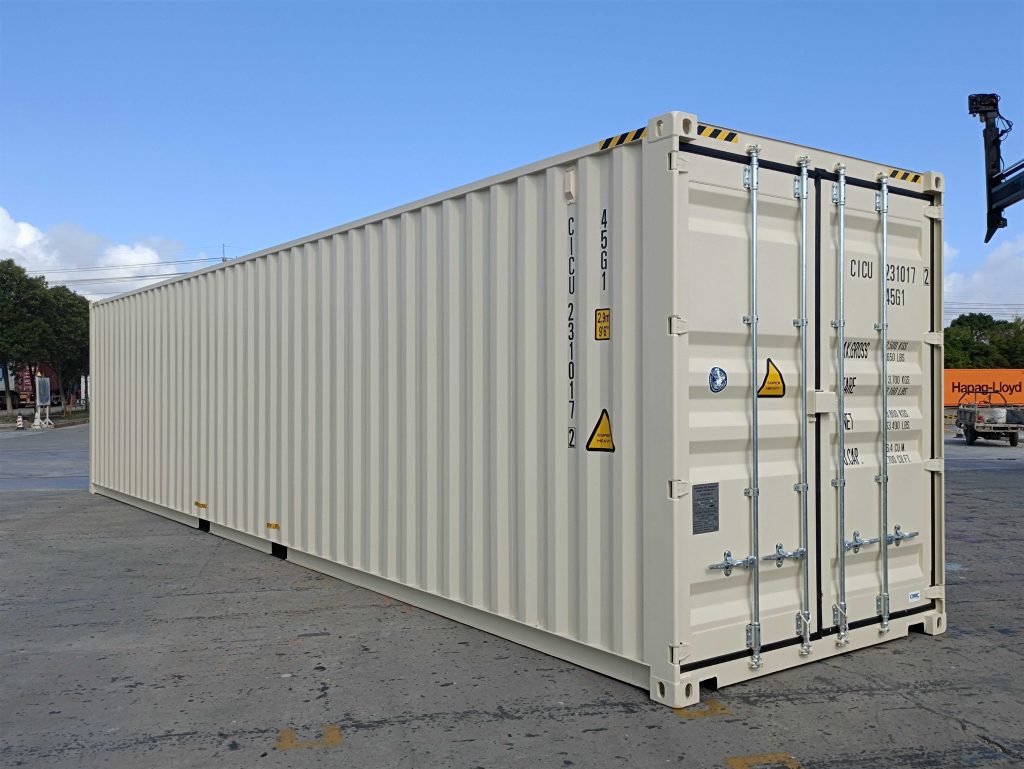Why Intermodal Containers Still Matters In 2024

Intermodal Containers: The Backbone of Global Trade
Intermodal containers, often described merely as shipping containers, are an important aspect of contemporary logistics and global trade. Presented in the mid-20th century, these standardized boxes permit the smooth transport of items through multiple modes of transport, consisting of ships, trains, trucks, and more. Their influence on the supply chain has actually been extensive, facilitating increased effectiveness and decreasing shipping expenses.
What are Intermodal Containers?
Intermodal containers are big standardized boxes built for the effective handling and transport of cargo. They are constructed from resilient materials like steel and aluminum and come in different sizes, primarily developed for ease of stacking and transport. The intro of intermodal containers changed shipping as it made the process of moving items from one mode of transport to another substantially simpler.
Kinds Of Intermodal Containers
Intermodal containers can be found in numerous types tailored for specific cargo needs:
| Type | Description | Standard Size |
|---|---|---|
| Dry Cargo Containers | Developed for basic cargo that does not require temperature level control. | 20 ft, 40 feet, 45 ft |
| Reefer Containers | Refrigerated containers for disposable items. | 20 ft, 40 feet |
| Open Top Containers | Containers without a roof for oversize cargo that can not fit through doors. | 20 feet, 40 feet |
| Flat Rack Containers | Developed for heavy equipment and big products that do not fit in regular containers. | 20 ft, 40 feet |
| Tank Containers | Used for transferring liquids, gases, and bulk liquid products. | 20 feet (requirement) |
The Role of Intermodal Containers in Global Trade
Intermodal containers are important for the assistance of global trade in several ways:
- Efficiency: Standardization in size and function enables quick loading and unloading.
- Cost Reduction: Reduced labor and time at ports and during transit result in lower shipping expenses.
- Cargo Protection: Durable construction secures cargo from environmental damage.
- Versatility: Containers can be quickly transferred across different transport modes without repacking.
The Intermodal Transport System
The intermodal transport system refers to the coordinated use of different transport modes in shipping products. This system is not just about the containers but likewise about how they are managed throughout various points in the supply chain. Here's a brief summary of how intermodal transport works:
- Origin Point: Goods are packaged in intermodal containers at the manufacturer's center.
- Regional Transportation: Trucks transport containers to rail lawns or ports.
- Long-Distance Transportation: Trains or cargo ships bring the containers to the destination port or depot.
- Last Delivery: Trucks provide containers from the transport hub to the final location.
Common Uses of Intermodal Containers
Intermodal containers serve numerous industries and applications. Here's a list of the most common usages:
- Automotive Parts: Transporting numerous components for assembly lines.
- Electronic devices: Shipping customer electronic devices throughout borders.
- Food Products: Using refrigerated containers for perishables.
- Textiles: Moving ended up garments and basic materials.
- Construction Materials: Delivering devices and products for developing sites.
Benefits of Intermodal Containers
The adoption of intermodal containers uses several benefits:
- Global Standardization: The International Organization for Standardization (ISO) has set standards, facilitating worldwide trade.
- Lowered Idle Time: Quick transfers in between transportation modes keep cargo moving and lower waiting times.
- Increased Security: Containers supply a safe environment for products, reducing theft and damage.
- Ecological Benefits: Combined transport choices can decrease carbon footprint compared to standard shipping techniques.
Difficulties Facing Intermodal Transport
While intermodal containers have transformed the shipping industry, they are not without obstacles. Some typical concerns consist of:
- Infrastructure Limitations: Not all transport centers are geared up to handle intermodal containers effectively.
- Regulative Hurdles: Different nations may have differing regulations that complicate transport.
- Capacity Constraints: In peak seasons, there may not be sufficient containers or transport area available.
Future of Intermodal Containers
The future of intermodal containers is defined by advancements in technology and sustainability efforts:
- Smart Containers: IoT-enabled containers can offer real-time tracking and monitoring of cargo conditions.
- Green Technologies: The usage of alternative fuels and sustainable materials in container construction is on the increase.
- Automation: Robotics and AI are being incorporated into logistic operations to enhance effectiveness.
Often Asked Questions (FAQs)
Q1: What is the basic size of intermodal containers?A1: The most common sizes are 20 feet and 40 feet, however other sizes are also offered, consisting of 45-foot containers. Q2: What is the difference between a dry cargo container and a reefer container?A2: Dry cargo containers are created for non-perishable products, while reefer containers are refrigerated and used for transporting disposable products. Q3: How are intermodal containers secured during transport?A3: Containers are usually secured using twist
locks during shipping, and they are created to hold up against harsh conditions. Q4: Can intermodal containers be customized?A4: Yes, there are options for tailoring containers for specialized cargo requirements, such as insulation, insulation, or modifications for ventilation. Q5: How do intermodal containers add to sustainability? COG Containers LTD : Intermodal containers help in reducing the carbon footprint of shipping by assisting in effective transport and reducing the variety of dealing with steps.
Intermodal containers are important to today's interconnected world. They symbolize efficiency, security, and financial viability in worldwide trade, allowing countries to exchange items seamlessly and economically. As the logistics market
continues to evolve, intermodal containers will adjust to fulfill new demands and difficulties, guaranteeing that they stay a fundamental element of global trade for years to come. By comprehending the benefits, challenges, and future patterns surrounding these containers, services and consumers alike can appreciate their significant function in our worldwide economy.

